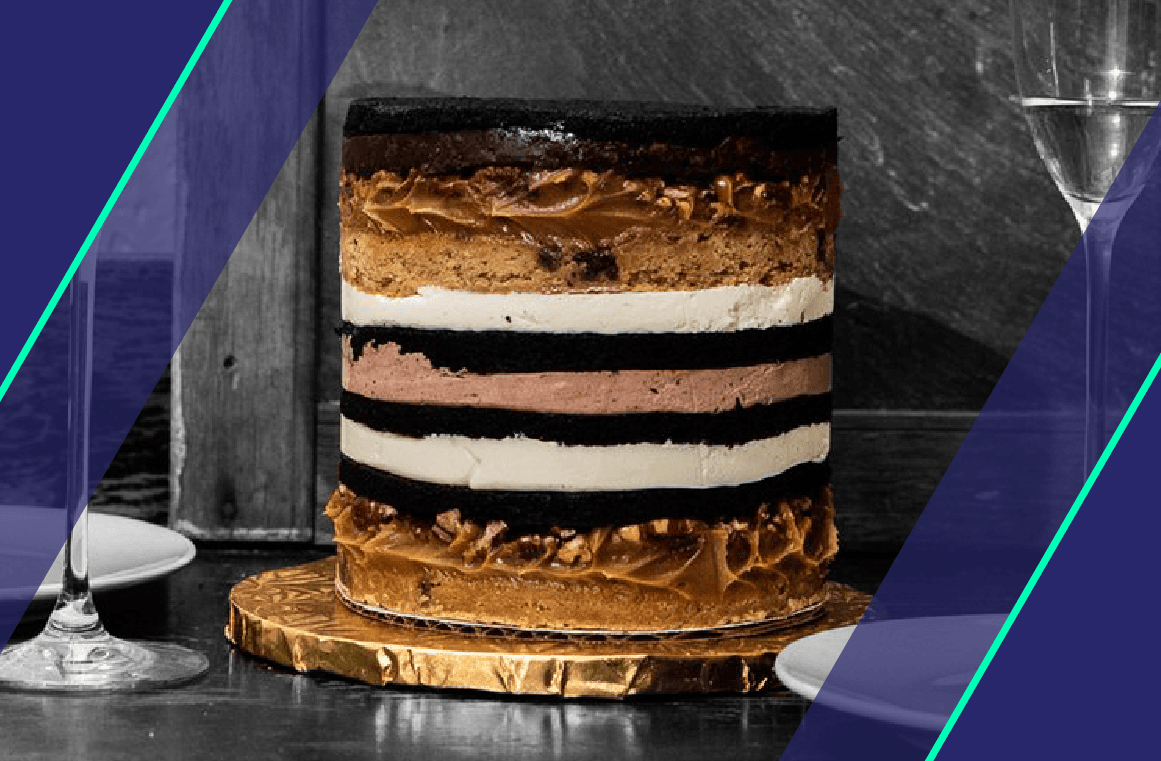


Refining and perfecting a recipe is a baker’s Everest. Working through two, three, four iterations of a recipe take time and dedication—a passion (and ability) shared by few. Auzerais Bellamy, owner of Blondery, is one of the few.
For the past 10 years, Bellamy has worked on refining her pecan and salted caramel blondies. Yes, 10 years. Inspired by a flavor from her childhood, she sought to capture the feeling and memory in a recipe of her own—a recipe for the perfect blondie. Out of this quest came Blondery, a 100% minority and woman-owned virtual direct-to-consumer (DTC) bakery that has boomed in popularity and profits over the last year.
According to the traditional playbook, DTC brands like Blondery should struggle to hang on anything more than a niche business. A decade ago, the idea that there would soon be a tidal wave of DTCs grabbing meaningful marketshare would have been scoffed at. But DTCs took a perceived weakness—a lack of access to traditional retail and distribution channels—and transformed it into a strength by turning their direct line to consumers into strong, personal relationships that even withstand a global pandemic. Traditional retailers are scratching their heads, looking to replicate that special sauce for connecting with customers.
So, what is the secret recipe that makes some DTCs so popular with customers? And what lessons can enterprise brands learn from them? It all comes down to capturing their audiences’ attention with a fresh and new approach to developing relationships by:
Here's how Blondery is doing it.
Blondery’s breakout success (clients include Bloomingdales, Netflix, Salesforce and more) is the product of Bellamy’s dedication to her craft and customers, but also an unlikely circumstance: COVID-19. As the desire for mail-order goods skyrocketed during the pandemic, Blondery’s already virtual direct-to-consumer model was there to meet demand. “We received hundreds of direct messages about baking and shipping products. In the middle of the pandemic, no one could see their family. I quickly noticed the need, assembled a small task force, and product,” Bellamy recalls. The bakery’s website noted that in June of 2020 alone, Blondery sold three times more blondies than in all of 2019.
Bellamy has excelled at using social media tell her story and build community, connecting with customers on a 1:1 level. “I don't take my customers for granted. Win the sense that whenever they messaged me, I replied back to them. I engage with them in my comment section. I know a lot about my customers, just from the conversations we have in my DMs.”
DTCs like Blondery have a leg up in leveraging owned channels like social media, newsletters, and websites in ways traditional brick-and-mortars do not: first-party data. With a direct window into their customers wants and needs, previous purchasing history and more, DTCs have invaluable information they can then use to personalize and contextualize their customer communications.
While Blondery is in the early stages of building their database, Bellamy is keen on using this tactic to bond with customers, and it has contributed to the approachability and overall draw to the bakery. “If I see that someone's been interacting with me, I make a note in their Shopify account, so when I ship out their order, I can write a handwritten note that says, ‘Hey, thank you so much. I appreciate it.’ I do it for the customers who have been very loyal and interactive."

Blondery’s story is Bellamy's’ story: a California native, she grew up baking with her family and experimenting with recipes. After earning a degree in pastry arts, she interned at a prestigious pastry school in France and went on to work at Michelin-star restaurants (all the while, continuing her quest to create that perfect blondie). Becoming frustrated with the lack of representation in fine dining, she set out to transform the industry.
“I'm the one advocating for myself, as I have been all these years, but now I get to teach my team to advocate for themselves. My team are mostly women, people of color or indigenous people, and we're working all together to reshape the fine dining industry. I want to create this safe space where everyone can come and learn and create,” Bellamy notes.
It’s an authentic, relatable story for customers across the country. Bellamy has used this understanding to create a unique storytelling model that positions her brand into an emotional, heart-and-mind place, resonating with each individual consumer. “There was a time for two or three years I didn't bake at all. I think vulnerability, as Brené Brown says, is courage. So, it took a lot of times for me to get to the point where I was like, okay, I can share a recipe because I know that the secret sauce is me.”
Bellamy is also keen on adding those personal touches wherever possible. She says, "I think that that goes a long way when someone can open a package and not only get a beautiful product that tastes good, but also a handwritten note that feels very personal because it is very personal.” She continues,“Personalization is a form of luxury, right? So, whenever we get something in the mail that has a handwritten note, we know it's been packaged very carefully and not just thrown in the box.”
While scaling this model may take some time—but these marketing tactics ultimately drive loyalty and retention with valuable customers. Larger brands can take a cue from Bellamy: invest in crafting an authentic story, genuinely connect with customers via owned channels to tell that story, and personalize to their customers’ wants and needs with the wealth of valuable information you have access to.
In Bellamy’s 10-year-quest for the perfect blondie recipe, she’s found something much greater: the recipe for a successful business with loyal, enthusiastic customers.
Want to try one of Auzerais' mouth-watering recipes for yourself? Check out this tutorial on how to make a famous cheesecake jar by Blondery.